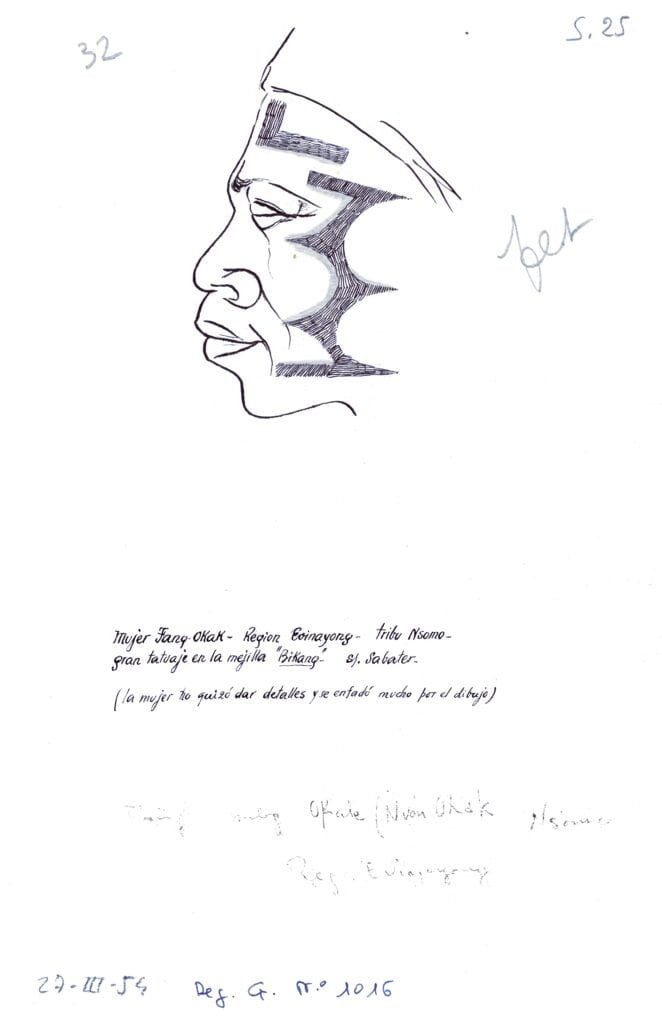Between 1949 and 1956 the Catalan primatologist Sabater i Pi carried out a study and semantic analysis of the tattoos and scarifications of the Fang of Equatorial Guinea – first colony, then protectorate and finally Spanish province. It was a “soft” approach to the cultural phenomenon contemplated with the slippery approach of “art.”
One of the results was a series of catalog sheets where the tattooed part – generally the face – was drawn, and information was given about the meaning of the tattoo as well as its name in the native language, which the author knew.
These sheets also contained less formal annotations of the following type: “the woman refused to give information and left very angry about the drawing.”
Drawn on paper, they made up the catalog of Fang tattoos of the ethnographic and colonial museum, later copied on cards by the draftsman Barberá.

































